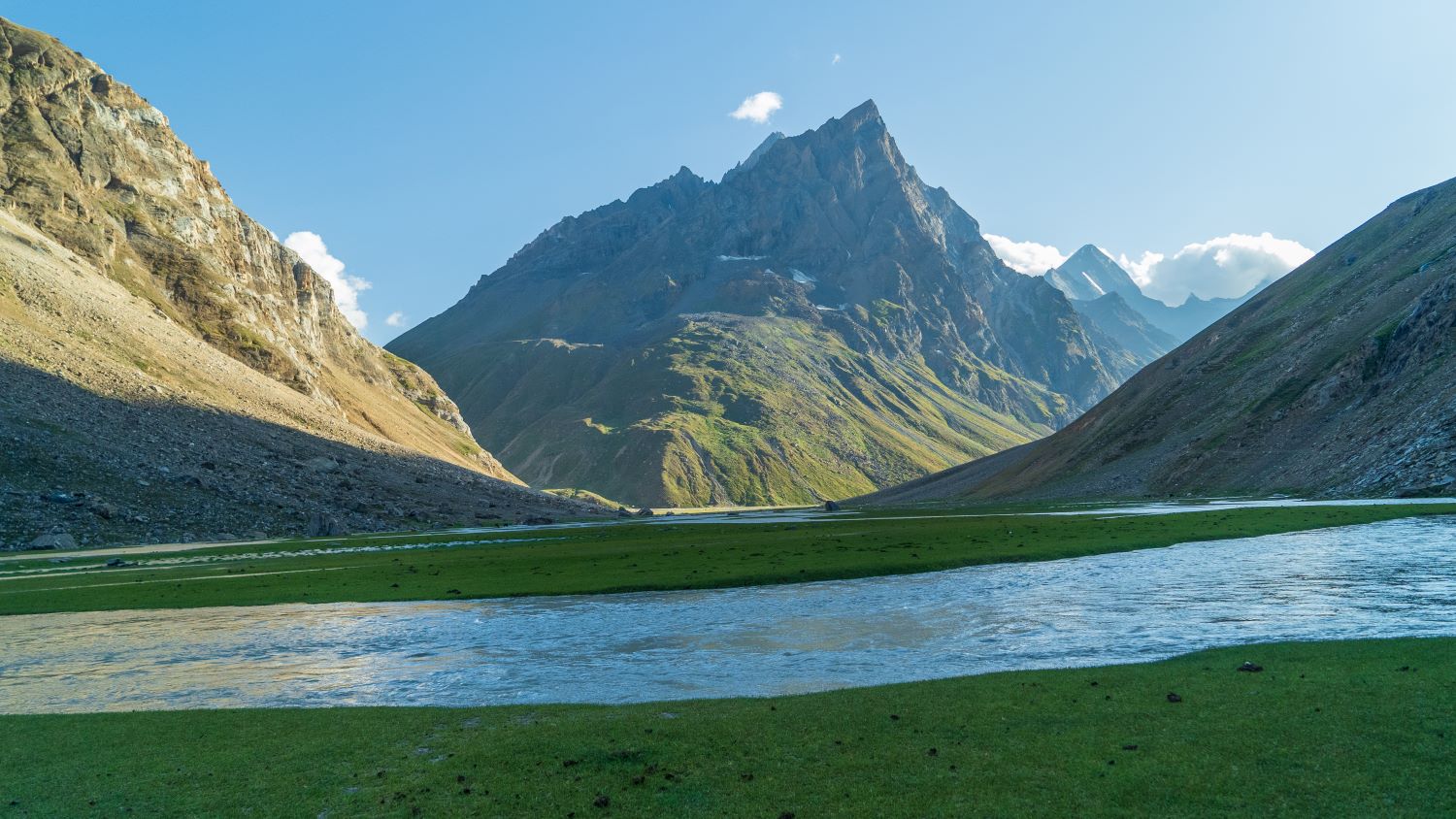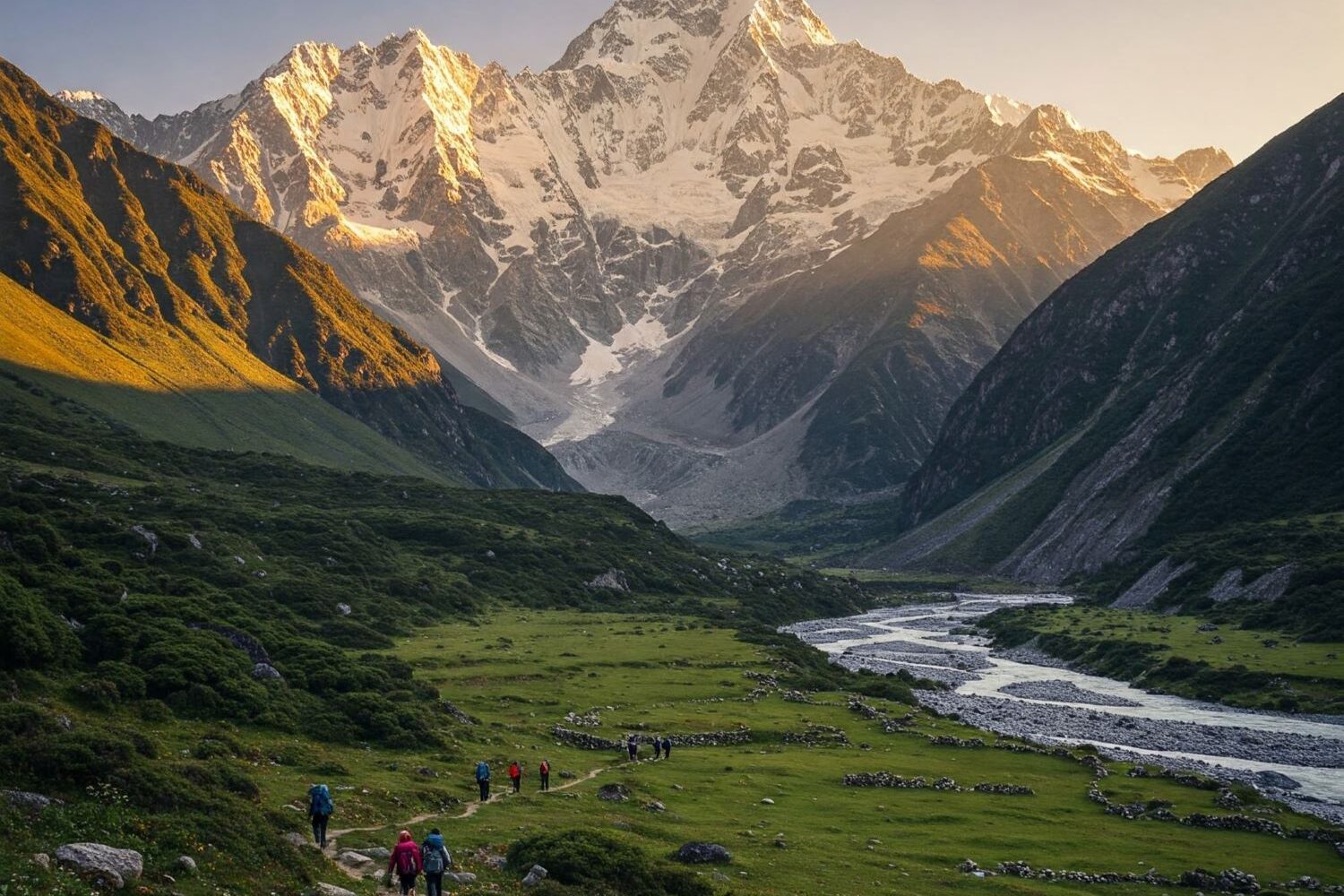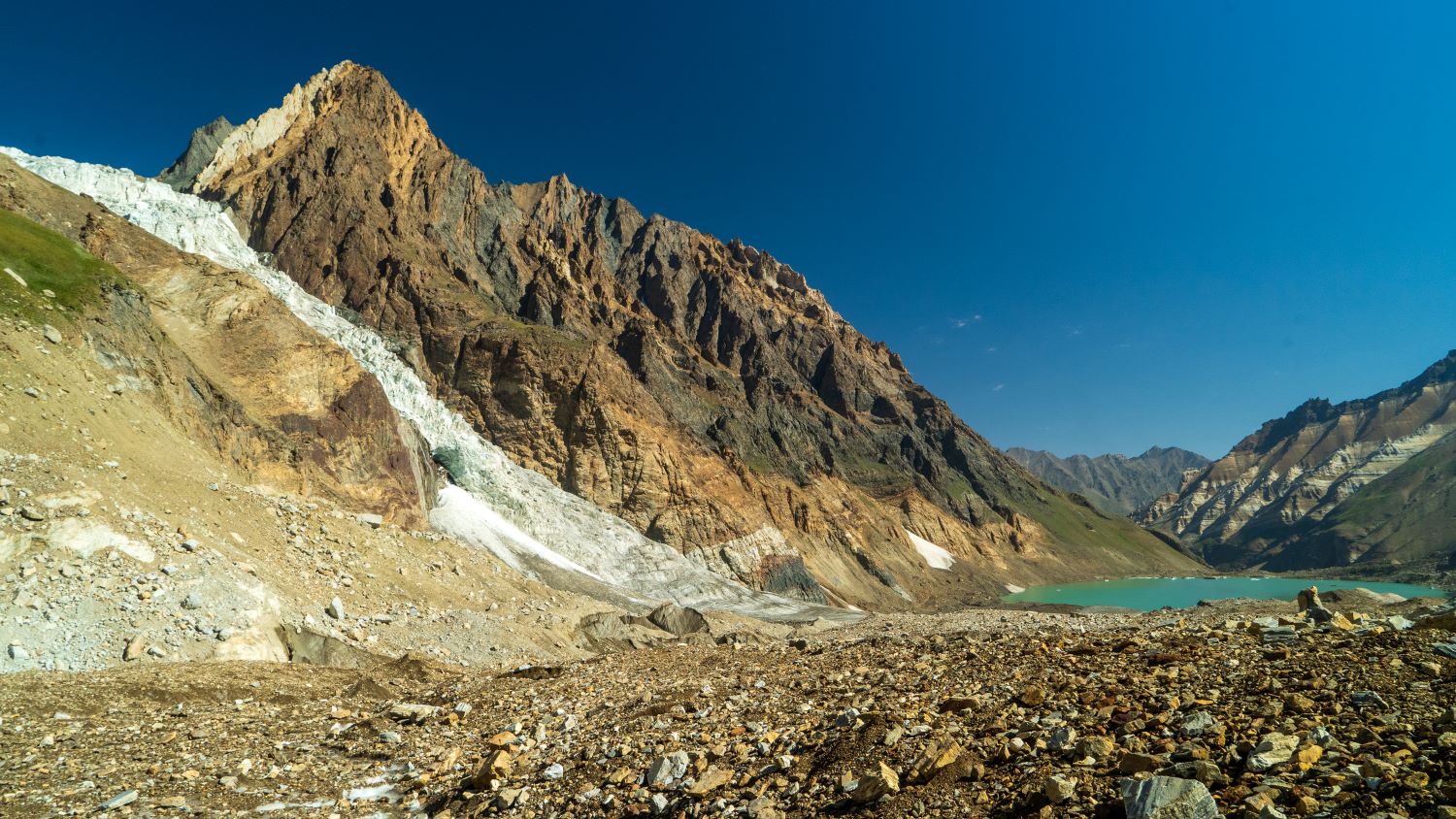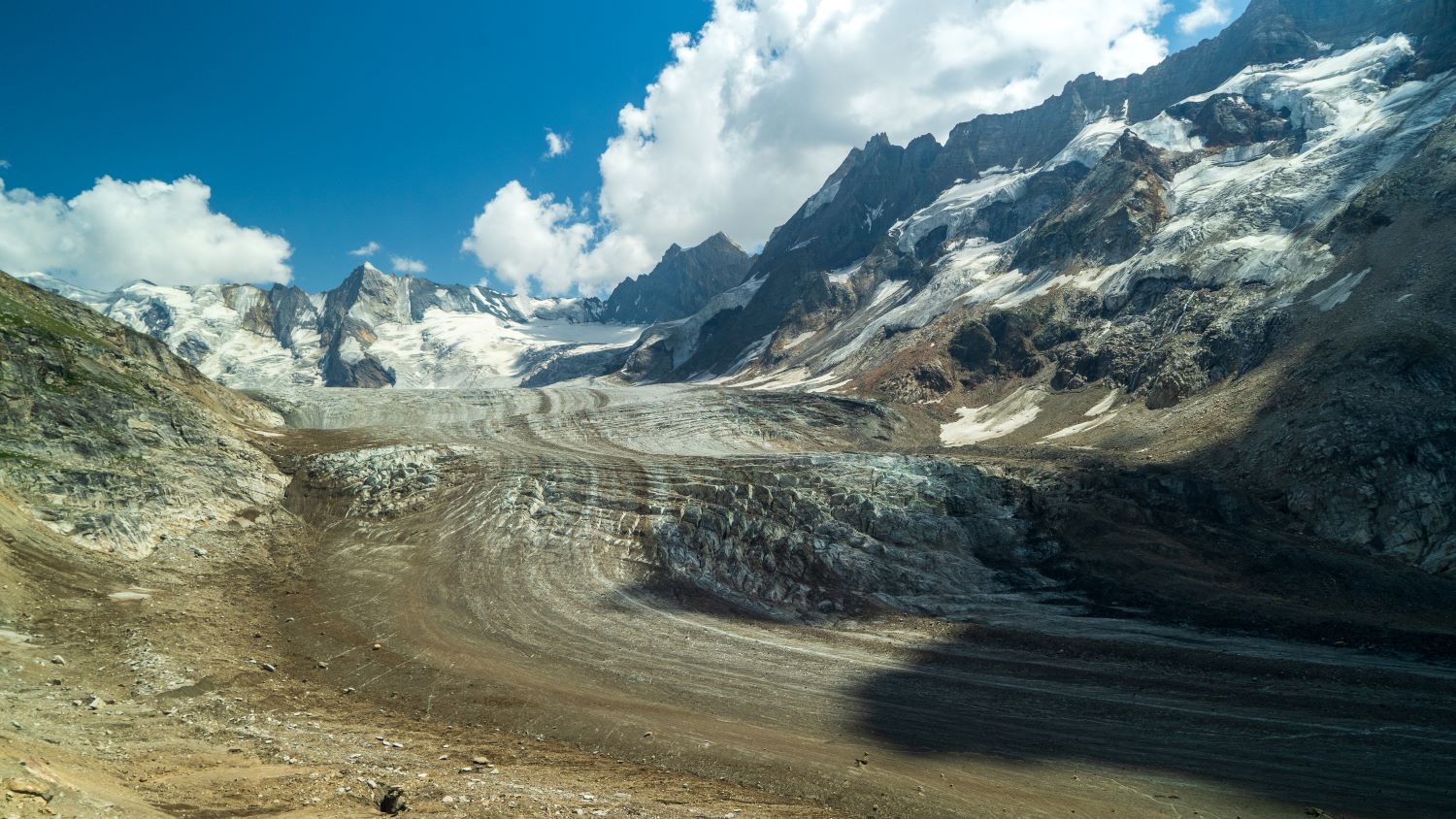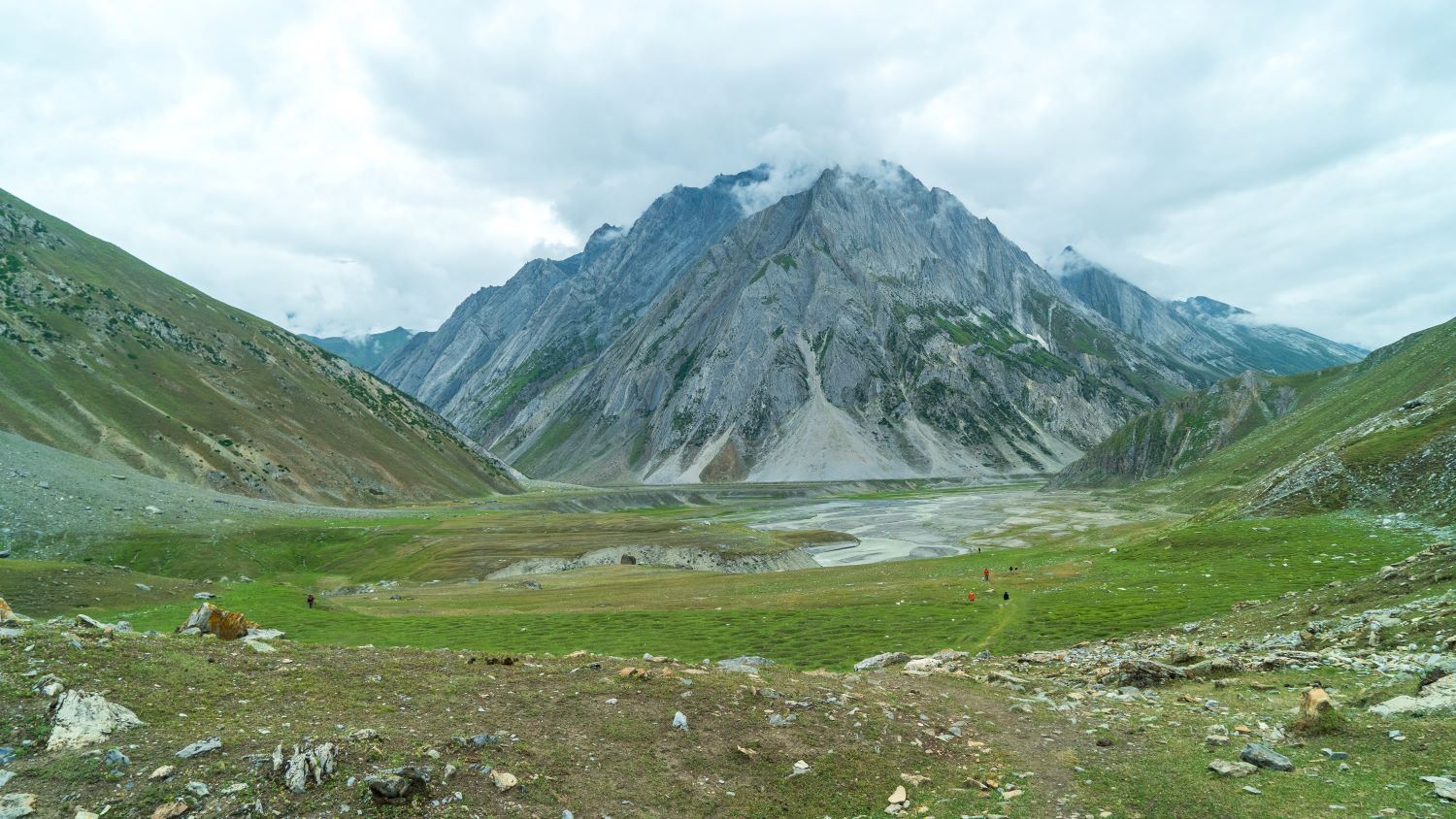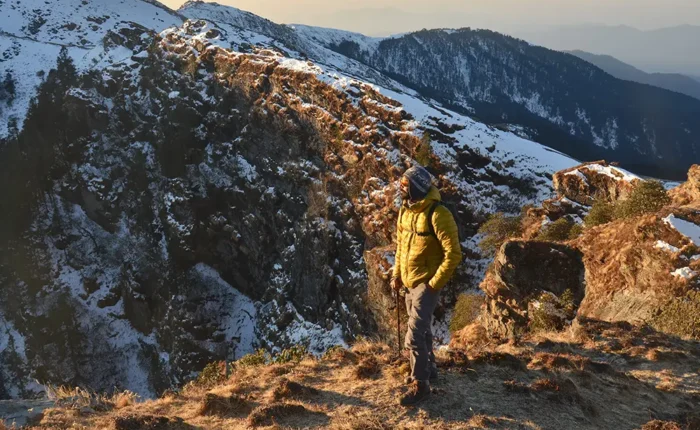Trek Distance: 6.5 km | Duration: 2.5–3 hours
The day starts with an exciting river crossing — icy, knee-deep waters that wake you right up. After crossing, the trail climbs gradually past Bakarwal huts into meadows filled with wildflowers.
The views open up quickly. Behind you is the vast Denora basin, and ahead are the Kalapari meadows, fed by clear streams. Huge glaciers and waterfalls dominate the valley, making the setting grand and dramatic.
Kalapari is a perfect campsite — quiet, scenic, and a good place to rest before tomorrow’s pass crossing. You can also take a short acclimatization walk to a nearby glacial lake in the evening.


